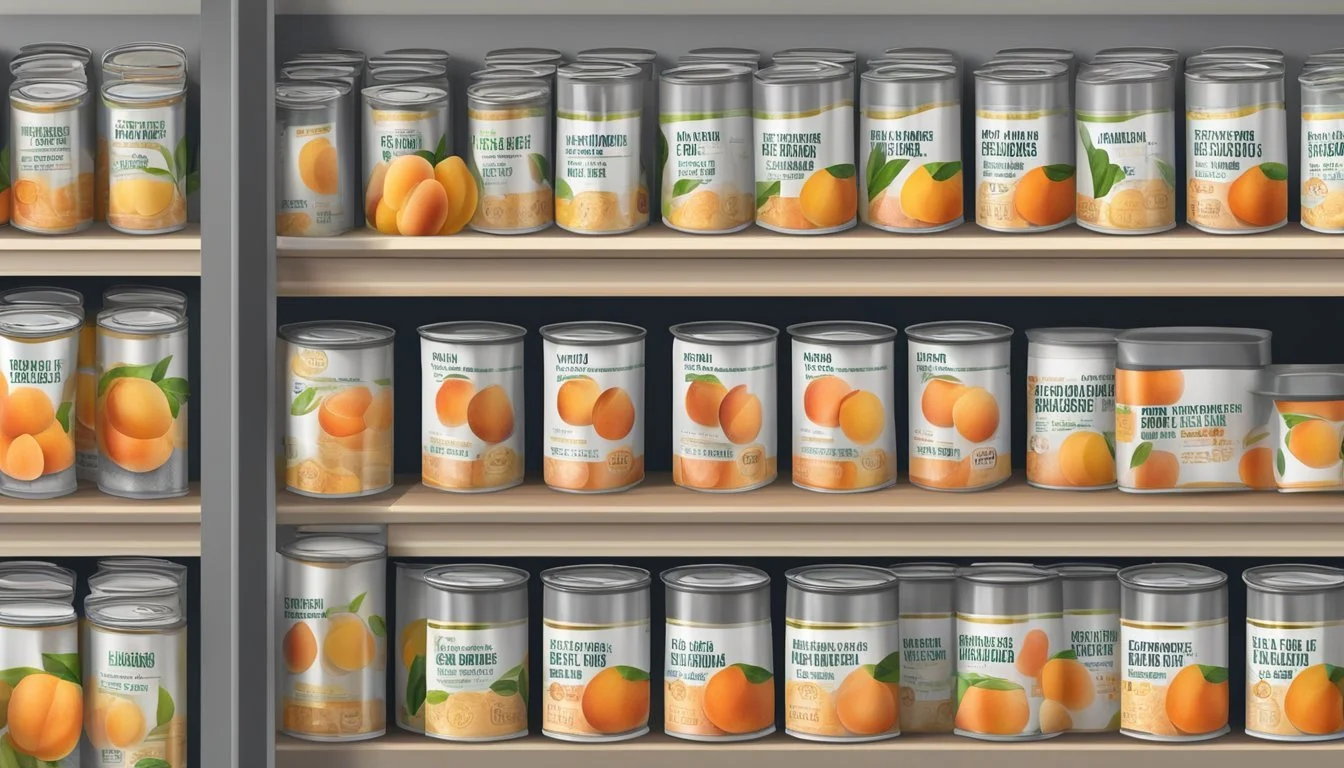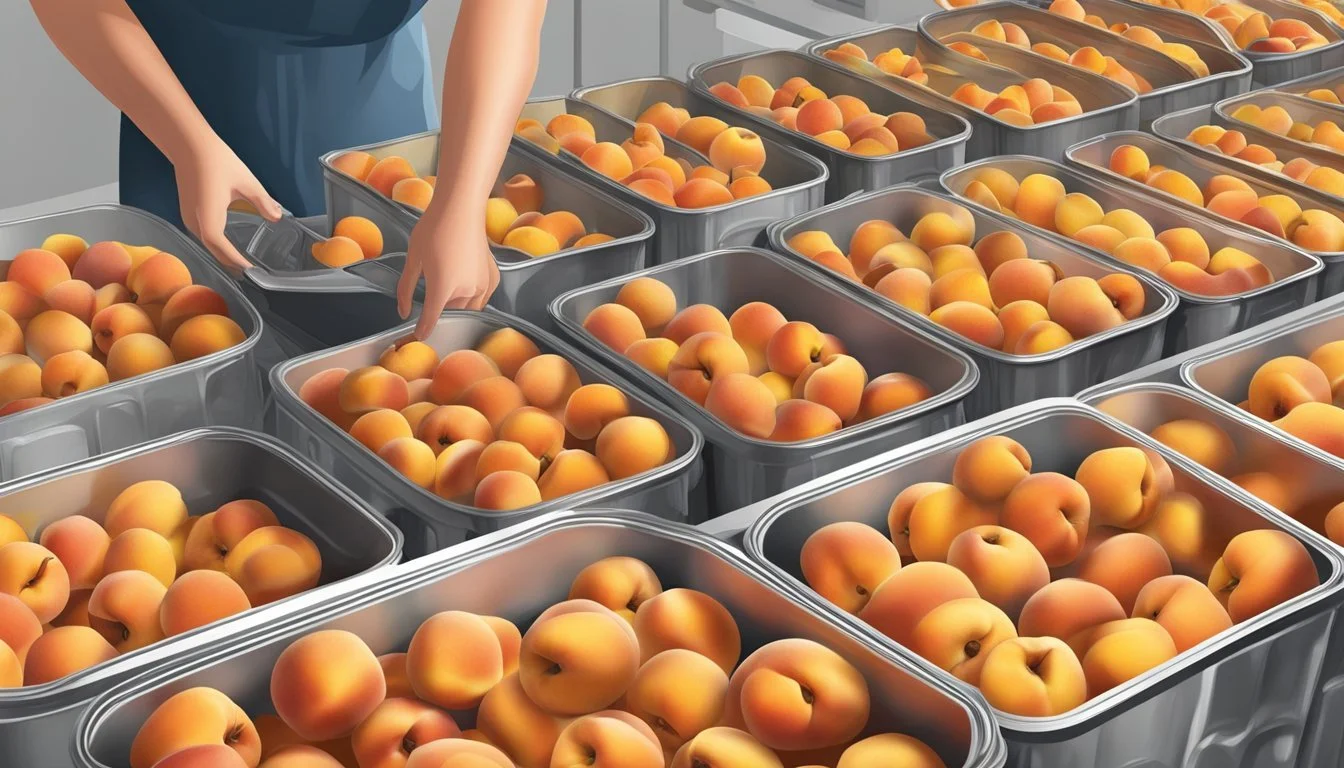Do Canned Peaches Go Bad?
Shelf Life and Storage Tips
Canned peaches are a convenient and long-lasting pantry staple, but like all foods, they can eventually go bad. Unopened canned peaches generally have a shelf life of 1 to 2 years beyond their expiration date. This extended shelf life makes them an excellent option for those looking to stock up on nutritious fruits that are easy to store.
The key to maintaining the quality of canned peaches lies in proper storage. Keeping the cans in a cool, dark place helps preserve their flavor and nutrition for as long as possible. Watch out for signs of spoilage, such as bulging cans, leaks, rust, or any unusual odors or appearances, which indicate that the canned peaches are no longer safe to consume.
While canned peaches may not match the fresh fruit's texture, they offer the same essential nutrients. They provide a reliable source of vitamins and fiber, making them a valuable addition to any diet. By understanding how to store and identify spoiled canned peaches, consumers can enjoy this nutritious fruit safely and for an extended period.
Understanding Canned Peaches
Canned peaches are a popular form of preserved fruit. They offer a convenient way to enjoy peaches year-round. Unlike fresh peaches, canned peaches have a much longer shelf life.
Nutritional Value
Canned peaches retain many of the nutrients found in fresh peaches. They are a good source of vitamins A and C, essential for vision and immune function. Fiber aids in digestion, and potassium helps maintain proper heart and muscle function.
Preservation Method
The process of canning preserves peaches by sealing them in an airtight container. This method helps maintain the fruit's flavor and nutritional value over time. Canned peaches are typically stored in syrup, juice, or water.
Storage Conditions
Proper storage is essential for maintaining the quality of canned peaches. They should be kept in a cool, dry place away from direct sunlight and heat. It's recommended to consume them within 1 to 2 years for optimal taste but they can last even longer if stored correctly.
Potential Spoilage
While canned peaches are designed for long-term storage, they are not immune to spoilage. Dents, rust, or swelling in the cans can lead to air exposure, which may cause the peaches to go bad. Always check for signs of spoilage, such as an off smell or color change, before consuming.
Health Benefits
Canned peaches provide a convenient source of antioxidants, which help combat oxidative stress in the body. They serve as a nutritious snack or a quick ingredient for various recipes, offering a blend of taste and health benefits.
Shelf Life and Expiration
The longevity of canned peaches depends on various factors, including storage conditions and the manufacturer's guidelines. This section will explore considerations surrounding expiration dates, and key factors influencing shelf life.
Expiration Date and Best By Considerations
Unopened canned peaches often have a shelf life of 18 to 24 months from the date of manufacture. Expiration dates and best before dates are generally provided by the manufacturer to guarantee peak quality and safety.
Although canned peaches can remain safe to consume beyond these dates, their texture and flavor might decline. Commercial packaging plays a vital role in ensuring longevity, as undamaged cans help preserve freshness longer. Properly stored cans, free from dents and rust, extend their usable life.
It's important to follow storage recommendations and pay attention to any noticeable signs of spoilage such as bulging cans or off odors.
Factors Affecting Shelf Life
Several elements affect the shelf life of canned peaches, starting with storage conditions. Cans stored in a cool, dry place will maintain optimal quality longer than those exposed to heat and humidity.
Packaging integrity is another crucial factor. Damaged or compromised cans allow air and bacteria to enter, speeding up spoilage. Keep cans free from dents and rust to ensure shelf stability.
Finally, the initial quality of the peaches at the time of canning influences how long they will last. Manufacturers typically select peaches at their peak ripeness to enhance shelf life and taste.
In summary, storage conditions, packaging, and initial product quality are critical to extending the shelf life of unopened canned peaches.
Storage Guidelines
Storing canned peaches properly is essential to maintain their quality and safety. This section provides detailed guidelines for both unopened and opened cans.
Proper Storage Conditions
Unopened canned peaches should be stored in a cool, dry place such as a pantry to maximize their shelf life. Ideal temperatures range from 50°F to 70°F.
It is crucial to avoid exposure to direct sunlight and high humidity. Prolonged exposure to these conditions can cause the cans to rust, swell, or leak, compromising their integrity.
Keep the cans away from heat sources like stoves and radiators. A consistent environment helps maintain the best quality of the peaches for up to five years or more. Ensuring the cans are stored upright can also prevent potential leakage.
Storing Opened Cans
Once a can of peaches is opened, transfer the contents to an airtight container. Do not store the fruit in the original can, as it can develop off-flavors.
Place the airtight container in the refrigerator. Opened peaches typically remain safe to eat for up to seven days when refrigerated. For longer storage, the peaches can be placed in a freezer-safe container and frozen. They retain their best quality for about 6-12 months in the freezer.
Labeling the container with the date of opening or freezing helps keep track of freshness. Following these practices ensures the peaches remain safe and of high quality for future use.
Food Safety Concerns
Ensuring the safety of canned peaches involves understanding potential contamination risks and proper handling of leftovers. These factors can significantly impact whether the product remains safe to consume.
Contamination and Foodborne Illnesses
Canned peaches are generally safe if the seal remains intact. However, there is a risk of contamination if the can is damaged.
Botulism, a rare but serious illness caused by Clostridium botulinum, is associated with improperly stored or sealed canned foods. It's crucial to inspect cans for bulging, leaks, or rust before use. Any damage to the seal can lead to exposure to bacteria and other pathogens.
To avoid foodborne illnesses, always check expiration dates and store canned peaches in cool, dry places. Keeping the cans away from direct sunlight and heat helps maintain their integrity and safety.
Handling Opened Canned Peaches
Once opened, canned peaches need proper storage to prevent spoilage. Transfer leftovers to a clean, airtight container and refrigerate them. Leftover peaches should be consumed within 5-7 days.
Proper handling includes using clean utensils to avoid cross-contamination. Never leave opened canned peaches at room temperature for extended periods, as this can promote bacterial growth.
Labeling the storage container with the date of opening helps keep track of freshness. It's important to discard any peaches that show signs of spoilage, such as an off smell or mold growth. Following these guidelines ensures that leftovers remain safe to eat.
Maximizing Longevity
To ensure canned peaches maintain their quality and taste for as long as possible, consider the storage techniques that address freezing and temperature management.
Extending Shelf Life Through Freezing
Freezing canned peaches can significantly extend their longevity. Once a can is opened, transfer the peaches to a freezer-safe container to avoid exposure to air and moisture. Properly stored, the peaches can maintain their taste and freshness for up to 6-12 months in the freezer.
Before freezing, ensure that the peaches are fully submerged in their syrup or juice. This helps preserve their texture and flavor. Label containers with the date of freezing to monitor freshness over time.
Avoidance of Extreme Temperatures
Storing unopened canned peaches in a cool, dry place protects them from deteriorating prematurely. Avoid placing cans in areas with high temperatures or direct sunlight as these conditions can lead to the cans expanding or degrading.
Extreme temperatures, both hot and cold, can compromise the integrity of the can. It's best to store them in cabinets or pantries that maintain a consistent, moderate temperature. This approach can help keep the peaches safe to eat and retain their best taste for up to 18-24 months or even longer. Properly managing storage conditions is crucial for maintaining the quality of canned peaches.
Leveraging Canned Peaches in Cooking
Canned peaches offer convenience and lower food costs. They can be easily incorporated into various recipes or used as substitutes for fresh peaches without compromising flavor or quality.
Incorporating into Recipes
Canned peaches can enhance a variety of dishes. Desserts such as peach cobbler, pies, and crisps benefit greatly from their flavor and texture. Use them in smoothies for a quick, delicious boost of fruit.
Incorporate sliced or diced canned peaches into salads. The sweetness pairs well with greens, nuts, and cheeses. Sauces and salsas also benefit from the juiciness of canned peaches. Try adding them to BBQ or chutney for a unique twist.
Breakfast dishes like oatmeal, pancakes, and yogurt parfaits are elevated with a topping of canned peaches. Their natural sweetness reduces the need for additional sugars, providing a healthier option.
Substituting for Fresh Peaches
Canned peaches can effectively replace fresh peaches in many recipes. When using them in baking, it is important to drain and pat them dry to maintain the right consistency of the dough or batter. The ratio is usually one-to-one, making substitution straightforward.
Cooking times may need slight adjustments. Canned products are already soft, so they require less cooking time than fresh fruit. For savory dishes like chicken or pork with peach glaze, canned peaches save preparation time without compromising flavor depth.
Choose unsweetened or lightly sweetened canned peaches to control the sugar content of your dish. This flexibility helps in adhering to dietary restrictions or personal preferences.
Understanding Canning Process
Canning is a vital method for preserving fruits, helping them remain shelf-stable and retain nutritional values. Key aspects include the techniques used and the role of acidity in ensuring food safety.
Canning Techniques for Fruits
Canning involves processing the fruits in a way that kills bacteria and seals the jar to prevent new bacteria from entering. There are two primary techniques: water bath canning and pressure canning.
Water bath canning is used for high-acid fruits like peaches. It involves submerging jars in boiling water for a designated time as specified by guidelines, such as the USDA's recommendations. This method is straightforward and suitable for most fruits.
Pressure canning, on the other hand, is typically used for low-acid foods but can also be used for fruits to retain more nutrients. It requires a pressure canner to raise the temperature above boiling, ensuring that even the most resistant bacteria are destroyed.
Both methods demand meticulous attention to jar sterilization and sealing to maintain the shelf-stable nature of the preserved fruits.
Acidity in Canned Goods
Acidity plays a crucial role in the safety of canned goods. High levels of acidity inhibit the growth of bacteria, making it easier and safer to preserve fruits.
Fruits like peaches are naturally acidic. This allows them to be safely processed with methods such as water bath canning. Low-acid foods, conversely, require pressure canning due to their higher risk of bacterial growth.
The USDA guidelines specify acidity levels to ensure effective preservation. Understanding whether a fruit is high or low-acid helps determine the suitable canning method, crucial for ensuring the longevity and safety of the canned fruits.






